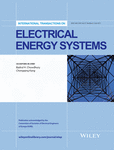Multiobjective transmission expansion planning problem based on ACOPF considering load and wind power generation uncertainties
Summary
This article tackles the transmission expansion planning (TEP) problem in a deregulated environment with the objective functions of investment, congestion, and load curtailment costs. The proposed TEP approach is a mixed-integer nonlinear optimization problem with a nonconvex structure and noncommensurable objective function. Until now, the research efforts on this problem have been mostly based on the DC power flow, which has the disadvantage of neglecting reactive load, power losses, and voltage constraints. However, a realistic transmission network operates based on AC power flow conditions. Therefore, the obtained transmission expansion plans based on DC power flow may be unable to satisfy the real conditions of power systems. In this article, the effects of different transmission network models on the objective functions of TEP are analyzed. Furthermore, different uncertainties especially associated with load and wind power generation are considered as the major concerns in TEP studies for each of the previously mentioned models. The point estimation method that enjoys from proper accuracy and low computational efforts is used for modeling the uncertainties. The nondominated sorting genetic algorithm II (NSGA II) is performed to obtain the Pareto optimal solutions of the TEP objectives and the final optimal solution is searched by applying the fuzzy decision-making approach based on decision-maker preferences. The models are simulated on the case studies of IEEE 24-bus reliability test system as well as the Iranian 400 kV transmission grid. The obtained results show that the type of power flow and uncertainties can change the TEP optimal solutions and objectives significantly.




